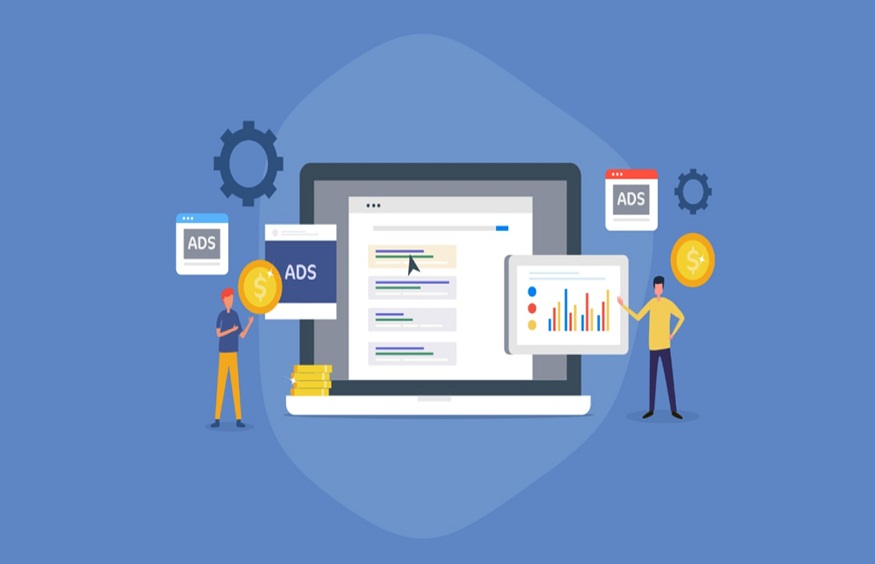In today’s digital age, online advertising has become an integral part of any successful marketing strategy.
When it comes to online advertising, Google Ads is undoubtedly one of the most popular platforms, offering businesses an extensive reach and targeting capabilities.
However, one common question that arises is, “How much does an ad on Google cost?” In this article, we will explore the factors that influence the cost of advertising on Google and provide insights to help you understand the pricing structure.
Google Ads: The Basics
Google Ads, formerly known as Google AdWords, is an advertising platform that allows businesses to create and display ads across Google’s search engine results pages, websites, and mobile applications.
It operates on a pay-per-click (PPC) model, meaning advertisers only pay when someone clicks on their ad. This makes it a cost-effective advertising solution as you only pay for actual user engagement.
Factors Influencing ad on Google cost
In the vast realm of digital advertising, Google AdWords stands tall as one of the most popular and effective platforms for businesses to promote their products and services.
However, it’s no secret that advertising on Google can come at a price. The cost of running ads on the platform can vary greatly, influenced by a multitude of factors.
We will explore the key factors that can significantly impact the cost of ads on Google and delve into how advertisers can optimize their campaigns to achieve the best results within their budget.
1. Competition
One of the primary factors determining ad costs on Google is the level of competition within your target market.
Highly competitive industries, such as insurance or finance, often experience higher costs per click (CPC) due to numerous advertisers vying for the same keywords and placements.
When multiple businesses are bidding for the same ad space, prices naturally escalate. Advertisers in competitive niches must be prepared to invest more in their campaigns to achieve prominent ad placements and outbid their rivals.
2. Ad Quality and Relevance
Google prioritizes providing a positive user experience by displaying relevant and high-quality ads.
Advertisers who create compelling, engaging, and relevant advertisements that align with the intent of users’ search queries are more likely to achieve better ad positions at lower costs.
Google’s Ad Rank algorithm considers factors like ad click-through rate (CTR), landing page experience, ad relevance, and ad extensions to determine an ad’s quality score.
By focusing on improving these aspects, advertisers can improve their ad’s position and potentially reduce costs.
3. Keyword Selection and Bidding Strategy
Keywords play a vital role in Google ads, and selecting the right ones can significantly impact costs.
Popular, competitive keywords generally come with higher costs, as bidding wars are more likely to occur.
Long-tail keywords or niche-specific keywords can often be more cost-effective, offering an opportunity to reach a targeted audience at a lower cost.
Advertisers should conduct thorough keyword research and consider a well-balanced bidding strategy to maximize results within their budget.
4. Geographic Targeting
The location you target can also influence the cost of Google ads. Highly competitive regions, such as major cities or countries with strong economies, tend to have higher advertising costs.
Advertisers should carefully analyze their target audience’s geographic distribution and consider adjusting their bids based on the value of each location.
Advertisers could consider employing a performance agency to focus on specific regions and geo-targeting options to help optimize their costs by reducing wasteful spending on areas with low conversion potential.
5. Ad Scheduling and Frequency
Timing is crucial in advertising, and Google provides options for ad scheduling to target specific days and times.
The cost of running ads may vary depending on when your target audience is most active. If demand for ad placements is high during certain periods, costs can increase.
Advertisers should leverage campaign data to identify peak times for their audience and optimize their ad scheduling to maximize visibility while minimizing costs.
6. Quality of Landing Pages
A well-designed landing page is essential for a successful ad campaign. If your landing page fails to provide a positive user experience or lacks relevant and valuable content, it can lead to lower conversion rates and higher ad costs.
Google considers the relevance and user experience of landing pages when determining ad quality and position.
By optimizing landing pages for relevance, load time, mobile-friendliness, and clear call-to-actions, advertisers can improve the quality score of their ads, potentially leading to lower costs.
7. Ad Format and Placement
Google offers various ad formats and placements, including search ads, display ads, video ads, and more. The cost can vary depending on the format and placement you choose.
For example, display ads on popular websites may have higher costs compared to text-based search ads.
Advertisers should carefully consider their target audience, campaign goals, and budget to select the most appropriate ad formats and placements that offer the best return on investment.
8. Device Targeting
The device on which your ads are displayed can impact costs. Mobile devices, in particular, have seen a significant rise in usage, and targeting mobile users may incur higher costs due to increased competition.
Advertisers should assess their target audience’s device preferences and behavior to allocate their budget effectively and optimize bids for different devices.
9. Ad Campaign Settings
Google provides a range of campaign settings that can impact ad costs. Factors such as campaign budget, bidding strategy (e.g., manual bidding or automated bidding), ad rotation settings, and campaign goals can all influence the cost of ads.
Advertisers should regularly review and fine-tune their campaign settings based on performance data to optimize costs and achieve desired outcomes.
10. Advertiser’s Historical Performance
Google takes into account an advertiser’s historical performance when determining the cost of ads.
Advertisers with a strong track record of delivering relevant, high-quality ads and achieving positive user engagement may benefit from lower costs.
Conversely, advertisers with a history of low ad performance or policy violations may face higher costs or limited ad exposure.
It emphasizes the importance of maintaining a positive ad performance and adhering to Google’s policies.
11. Ad Campaign Optimization
Ongoing campaign optimization is crucial to control costs and improve ad performance. Regularly monitoring key metrics like CTR, conversion rate, and cost per conversion can provide insights into areas that require improvement.
By continuously testing and optimizing ad elements such as ad copy, images, landing pages, and targeting options, advertisers can achieve better results while potentially reducing costs over time.
12. Seasonality and Trends
Certain industries experience seasonal fluctuations and trends that can impact ad costs. For example, during the holiday season or major events, competition may increase, leading to higher costs.
Advertisers should anticipate and plan for these fluctuations by adjusting their budgets and bidding strategies accordingly to ensure their ads remain competitive.
Cost Estimation and Control
While there is no fixed cost for Google Ads, it’s possible to estimate the expenses based on industry averages and historical data.
Advertisers can use Google’s Keyword Planner tool or consult with a digital marketing agency and professionals to gain insights into the expected costs for their desired keywords and target audience.
To control and optimize costs on Google Ads, consider the following strategies:
- Keyword Research: Conduct thorough keyword research to identify relevant keywords with moderate competition and reasonable costs. Long-tail keywords can be effective in reaching specific, highly interested audiences.
- Ad Optimization: Continuously monitor and optimize your ads to improve their quality scores. Test different ad copies, landing pages, and call-to-actions to enhance performance marketing and lower costs.
- Ad Scheduling: Analyze data to identify peak hours or days when your target audience is most active. By scheduling ads during these periods, you can maximize visibility and engagement while minimizing costs during less active periods.
- Campaign Monitoring: Regularly review and analyze campaign metrics, such as click-through rates, conversion rates, and cost-per-conversion. Adjust your bidding strategy and budgets accordingly to focus on high-performing ads and keywords.
Conclusion
The cost of advertising on Google varies based on several factors, including keyword competition, quality score, ad format, targeting options, and campaign goals.
By understanding these factors and implementing effective strategies to control costs, businesses and any digital agency can make the most out of their Google Ads campaigns.
Remember that successful advertising requires continuous monitoring, optimization, and adaptation to maximize results within your budget.



